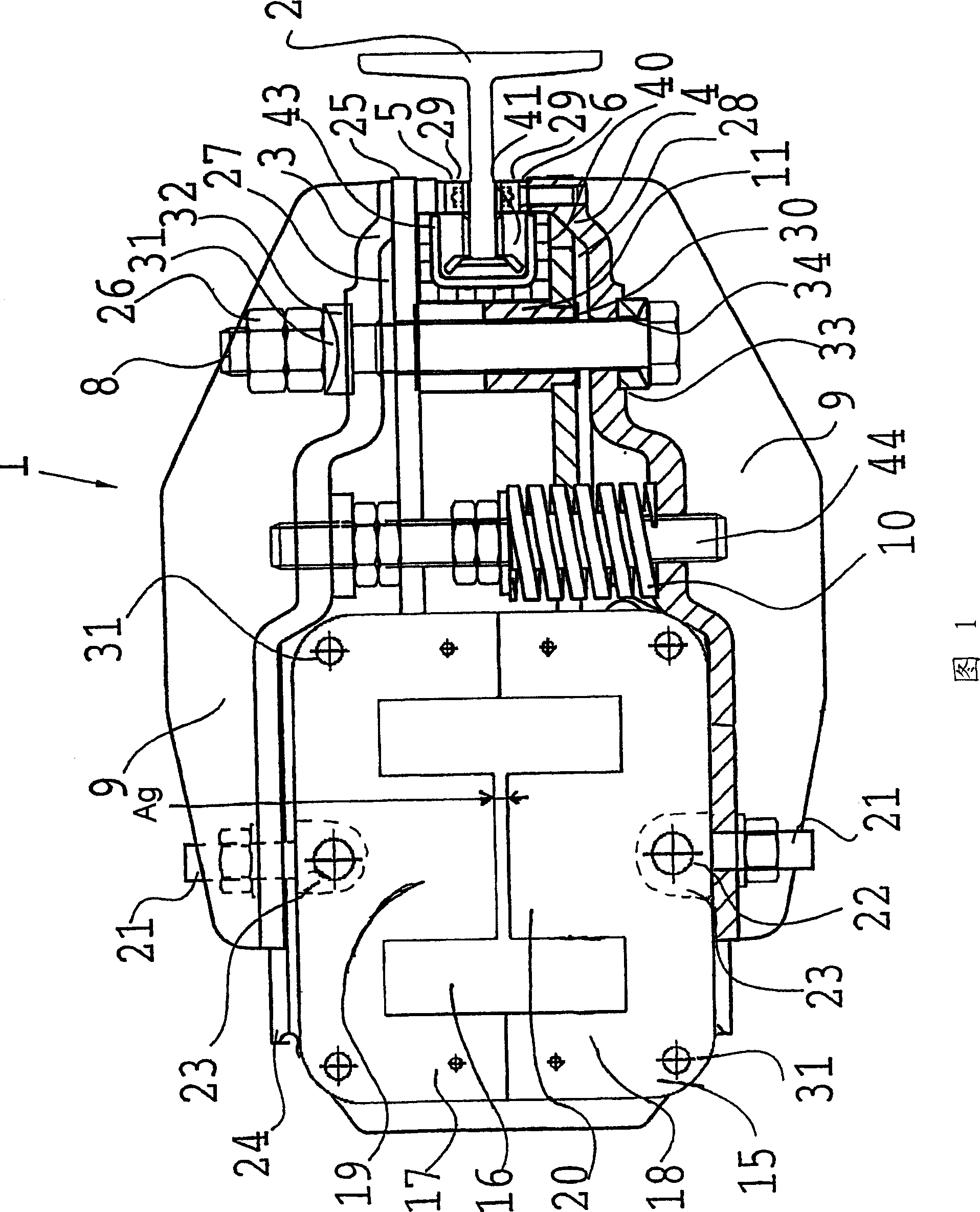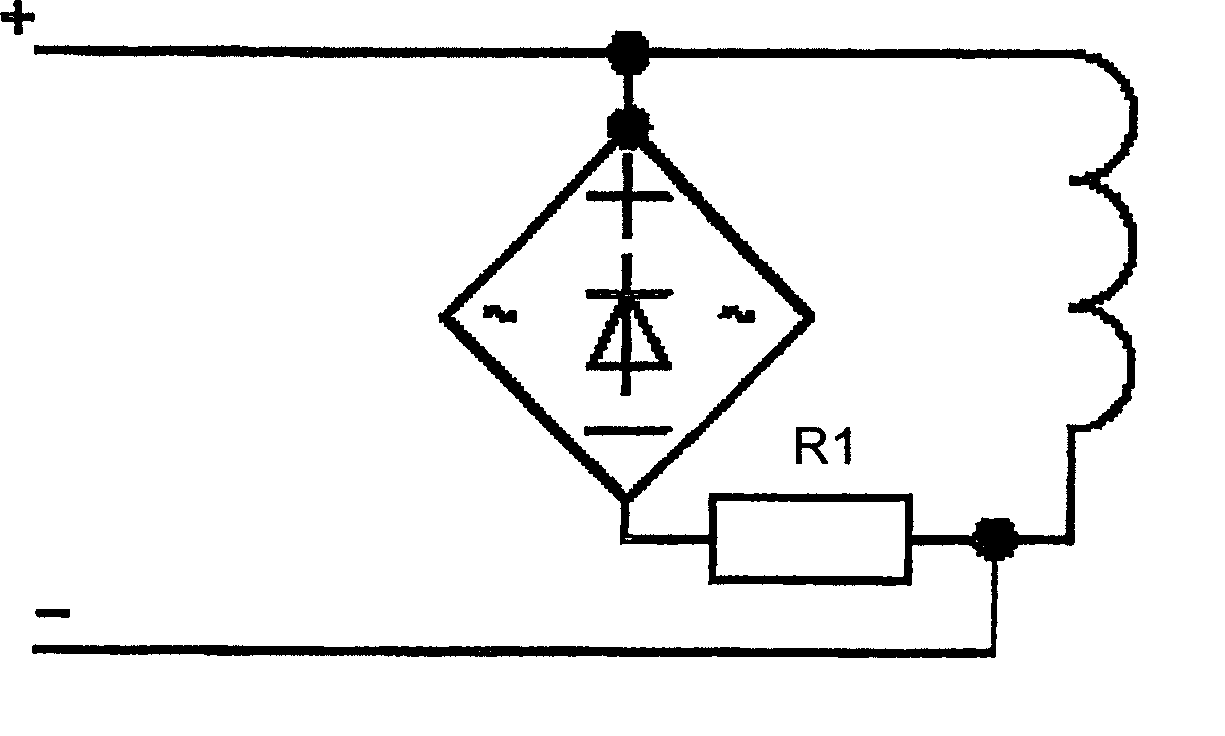Guide-rail brake with electro-magnetic activation
A technology of brakes and guide rails, used in elevators, transportation and packaging, etc., can solve the problem of not necessarily giving all the braking force, and achieve the effect of short air gap, simple structure, and small distribution range of operation delay.
- Summary
- Abstract
- Description
- Claims
- Application Information
AI Technical Summary
Problems solved by technology
Method used
Image
Examples
Embodiment Construction
[0023] Figure 1 shows a top view of a guide rail brake that can be used in the present invention. In FIG. 1 , the guide rail 2 can be seen between the brake pads 5 , 6 fastened to the jaws 3 , 4 of the brake clip. The jaws 3 , 4 are hinged to one another by means of screws 7 , 8 . For the sake of clarity, the bolts 7 are not shown in FIG. 7 . Jaws 3,4 are stiffened by ribs 9. The spring 10 acts on the jaws, pushing the jaws 3, 4 further apart from each other, in which case the brake pads 5, 6 are pressed against the guide rail 2 because the jaws are hinged to the brake pads by means of the bolts 7, 8. 5, 6 and the spring 10, so that the jaw plates cannot move away from each other at the position of the bolt. The spring 10 is guided by a central pin 44 .
[0024] The rail brake 1 is opened and held open by means of a power part 15, preferably a magnet, which enables a controllable movement. The control of magnets or other actuating means can take place by command of the el...
PUM
 Login to View More
Login to View More Abstract
Description
Claims
Application Information
 Login to View More
Login to View More - R&D
- Intellectual Property
- Life Sciences
- Materials
- Tech Scout
- Unparalleled Data Quality
- Higher Quality Content
- 60% Fewer Hallucinations
Browse by: Latest US Patents, China's latest patents, Technical Efficacy Thesaurus, Application Domain, Technology Topic, Popular Technical Reports.
© 2025 PatSnap. All rights reserved.Legal|Privacy policy|Modern Slavery Act Transparency Statement|Sitemap|About US| Contact US: help@patsnap.com



